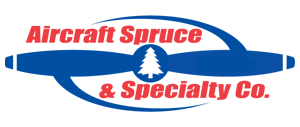THE AVIATION SUPERSTORE FOR ALL YOUR AIRCRAFT & PILOT NEEDS | 877-4-SPRUCE
F-5E Tiger II Model
$205.95/Each
Part# 13-10664
MFR Model# CF005T2T
MFR Model# CF005T2T
Overview
|
The F-5E Tiger II is a single-seat version for the Tunisian Air Force. In 1950, the F-5 started its life as a privately-funded light fighter program by Northrop. The first generation F-5A Freedom Fighter entered service in 1960. During the Cold War, there were over 800 produced through 1972 for US Allies. The F-5 proved to be a successful combat aircraft for US Allies, but it didnt entered front-line service with the US due to diverging priorities of the US services. A few surplus F-5As and F-5Es have been sold to private owners. In 1970, Northrops F-5A-21, which subsequently became the F-5E, was designated to replace the F-5A. It was lengthened and enlarged, with increased wing area and more sophisticated avionics, and was initially having an Emerson AN/APQ-153 radar. The F-5E eventually acquired its official name Tiger II. In its service life, the F-5E experienced numerous upgrades. The F-5E Tiger II has a crew capacity of 1. It has a maximum speed of 917 kn and a ferry range of 2,010 nmi. The F-5E Tiger II production amounted to 1,400 including all versions and production ended in 1987. Various F-5 versions remain in service with many other nations. Singapore has approximately 49 modernized and re-designated F-5S and F-5T aircraft. The F-5 was also developed into a reconnaissance version, the RF-5 Tigereye. |
WARNING: Cancer and Reproductive Harm - www.P65Warnings.ca.gov. |
Q&A
Please note, Aircraft Spruce's personnel are not certified aircraft mechanics and can only provide general support and ideas, which should not be relied upon or implemented in lieu of consulting an A&P or other qualified technician. Aircraft Spruce assumes no responsibility or liability for any issue or problem which may arise from any repair, modification or other work done from this knowledge base. Any product eligibility information provided here is based on general application guides and we recommend always referring to your specific aircraft parts manual, the parts manufacturer or consulting with a qualified mechanic.








 FREE Shipping
FREE Shipping






